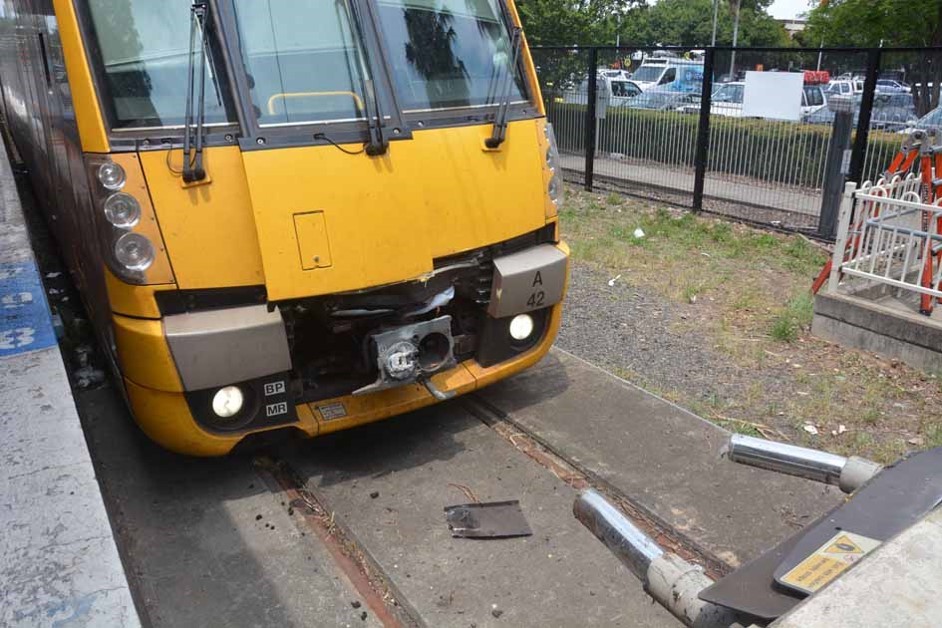
Why the driver of a suburban passenger train did not slow the train before it collided with the buffer stop at Richmond Station in Sydney’s northwest on 22 January 2018, resulting in injuries to 16 people, could not be conclusively determined, an investigation into the event notes.
The eight-car Waratah class passenger train (designated A42) collided with the buffer stop at the end of Richmond Station’s platform 2 at a speed of about 26 km/h.
A number of possibilities for the driver’s inaction were examined during the course of the investigation, which was conducted on behalf of the Australian Transport Safety Bureau (ATSB) by NSW’s Office Transport Safety Investigations (OTSI). These included: the driver blacking out; the driver experiencing a microsleep due to fatigue impairment; or the driver being distracted or inattentive.
The buffer stop withstood the impact of the collision and prevented the train from crossing onto a main road, the investigation found. But the investigation also concluded that the two hydro-pneumatic rams on the front of the buffer stop did not perform as designed, due to their non-alignment with the crash energy management system on the front of the Waratah train.
In addition, the crash energy management system on A42 did reduce the impact force of the collision, but not all components performed as designed.
Rail operators should ensure that multi-layered defences are in place against over-speeding.
“Rail operators should ensure that multi-layered defences are in place against over-speeding,” said Mick Quinn, OTSI CEO and chief investigator.
“This should include infrastructure design, rolling stock design and train crew health management. They need to ensure that identified risk controls are implemented, and that these control measures are effective in their performance.”
Mr Quinn said that if the driver’s cab had been fitted with an inward-facing camera, the footage may have provided investigators with an insight to why the driver was unresponsive leading up to the collision.
“Having audio and video recordings would allow investigators to eliminate, early in the investigation, potential contributory factors,” he said.
Since the accident, Sydney Trains has proactively addressed a number of safety issues, including redesigning the buffer stops for Platforms 1 and 2 at Richmond, while intermediate train stops, previously identified and recommended as a risk control, have been installed at Richmond.
However, the ATSB has issued a formal safety recommendation calling for Sydney Trains to take action to ensure that existing procedures regarding train crew rest breaks between shift cycles are adequate and start time rotations are reinforced to safeguard against fatigue impairment of train crews.
Finally, the report notes that automatic train protection, which if installed on A42 may have prevented the incident, was still being trialled at the time of the incident. Transport for New South Wales has scheduled automatic train protection to be operational on most Sydney Trains electric rolling stock by May 2021.
Read the report: Collision of Waratah passenger train A42 with buffer stop, at Richmond Station, New South Wales, on 22 January 2018


